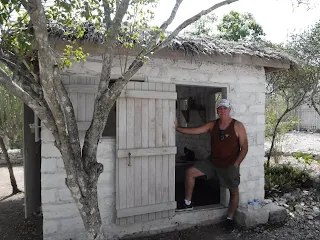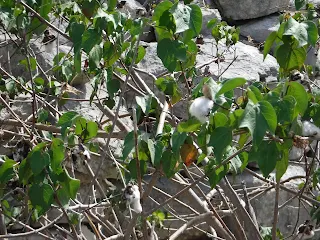 |
| Chesire Hall Plantation - Welcomes you - really? |
One of the worst things humans have ever done to other
humans is to own them. The entire concept of actually believing a person can be
‘owned’ goes against everything decent and just in a civilized world.
Of course, those people with such perverted thoughts that to
keep someone in chains (in reality or symbolically) is fine and dandy will not
like this blog and that’s okay by J and L.
According to the United Nations (2013) there are
approximately 30 million slaves today! These slaves can be forced factory
workers, child prostitutes, house workers, hard labor workers, and the list
goes on and on.
One example is the country of Mauritania – this West African
nation is believed to have one out of every four people in slavery currently.
The country has tried to rid the concept of slavery by outlawing but it has not
seemed to do much but find it harder to locate the slaves.
 |
| Top country dealing with slavery today |
Research clearly
shows that slavery is more prevalent in poorer countries than they are in more
economically sound countries such as the United States. If people have the power to increase their worth economically then they do not need to hold the ultimate power of slavery over others.
Sad – criminally
sad.
 |
| Plantation cannon to protect owners and slaves |
Professor Louis Henry Gates researched
(we like that term) and wrote that
during the terrible slave trade between the 16th and 19th
centuries nearly 12.7 million people were placed into slavery and transported
from Africa to various ports around the world. Over a million people died in
the transport itself but of the remaining 10 or so million poor souls the majority
found their harsh life in South America and the Islands throughout the Caribbean.
According to Professor Gates' studies (and this man knows his stuff) America and later the United States only received approximately 450,000 slaves from
Africa.
A small percentage
right but one slave is way too many!
While in the Turks
and Caicos recently, J and L had a chance to visit Cheshire Hall – a former
5,000 acre cotton plantation on the main island of Providenciales. Though the current size of this historical site is just short of 4 acres, it did give an idea of what life must
have been like to be a slave during the time this plantation.
Not comfortable -
 |
| A reconstructed slave dwelling - small and hot |
 |
| John showing how truly small the cabin was |
The plantation was the brain child of Wade Stubbs who convinced his brother Thomas to leave England in the late 18th century and come to the Turks and Caicos to start the plantation. In its heyday, the cotton and farmland would encompass 5,000 acres and be home (prison) to hundreds of slaves. It was supposed to have grown the most profitable and appealing cotton in the world - who knows - maybe or maybe not but certainly this plantation built in the Blue Hills area of TCI was well known and respected.
 |
| Some remaining cotton plants from hundreds of years ago |
Unfortunately or fortunately Thomas was hit by financially hard times around 1810 and sold the plantation and all its holdings to Wade who later found the battle against boll weevils, soil degradation and hurricanes were too much to put up with. So, a few decades of cotton growing ceased.
Turks and Caicos Islands which encompasses 40 islands but only eight are inhabited are low lying (156 feet being the highest hill among them), little rainfall with an average of 26 inches per year, and hot with averages between 80 and 90 degrees year round.
That is not a great area to grow anything and being there a few times J and L have to agree. The beaches are beyond beautiful and the water so clear that seeing dozens of feet down to the coral reefs is not difficult. But beyond the beaches the islands are mostly scraggly shrubs and small trees struggling to grow out of rocky soil. The idea of growing anything of value would take a lot of work, energy, innovation and prayer.
 |
| What remains of the Great House |
So, Chesire Hall Plantation fell into disuse after the cotton industry in TCI fell apart and the many decades following have been very unkind to the once thriving industry and home of the Stubbs. Today only a few crumbling stone walls depicting where the great house, cotton gins, water well, and other small buildings remain. The government allowed construction to invade the lands of Cheshire and it was only recently that it became a historical site - otherwise there may have been a high rise hotel charging lots of money for views of the British West Indies.
 |
| Looking toward the ocean from atop Chesire Hall Plantation |
 |
| A small toy boat carved out of rock |
History - no matter how painful needs to be preserved so the bad history reminds all of us not to repeat it.

No comments:
Post a Comment